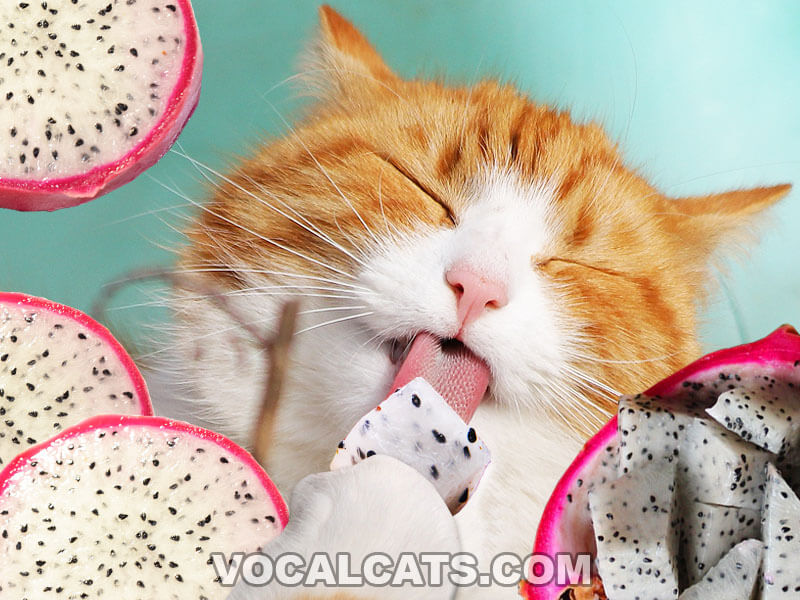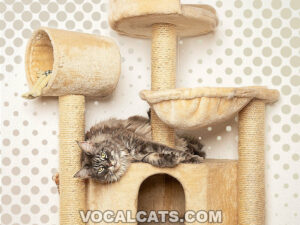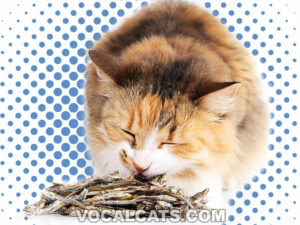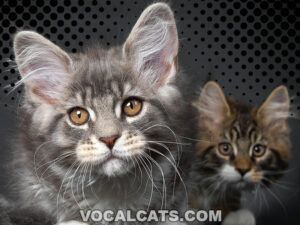Can cats eat Dragon Fruit? Yes, cats can eat Dragon Fruit, but it’s important to ensure their consumption is in moderation. Dragon Fruit is an excellent source of antioxidants and fiber and can help protect against cell damage and promote good digestive function in cats. However, anything consumed in excess can be harmful to our feline friends. Cats are obligate carnivores, and eating excess plant-based sources can disrupt their stomach functions.
Many cat owners believe their feline family members are omnivorous, however, this is a common misconception. Although our fuzzy friends may enjoy certain fruits and vegetables every now and then, it’s important to note that they are obligate carnivores which mean nature has designed their digestive system based on a carnivorous diet.
To be healthy and strong, a larger portion of our feline friends’ diet requires animal-based protein. Thus, our cat’s health is at risk if they eat too much plant-based food. Carnivorous animals lack symbiotic bacteria that help break down cellulose in fruits and vegetables. Once in a blue moon, indulgence is acceptable but don’t make it a habit.
Contents
- Can cats have Dragon Fruit?
- Is Dragon Fruit safe for cats?
- Is Dragon Fruit good for cats?
- Health benefits of Dragon Fruit for cats
- Is Dragon Fruit bad for cats?
- Health risk of Dragon Fruit on cats
- Is Dragon Fruit toxic to cats?
- Do cats like Dragon Fruit?
- Signs my cat likes Dragon Fruit
- Can kittens eat Dragon Fruit?
- How to properly feed Dragon Fruits to your cats
- Cats and Dragon Fruit
- Can cats eat yellow Dragon Fruit?
- Is Dragon Fruit cactus toxic to cats?
- Is Dragon Fruit plant toxic to cats?
- So, can cats eat Dragon Fruit?
- Related Questions
Can cats have Dragon Fruit?
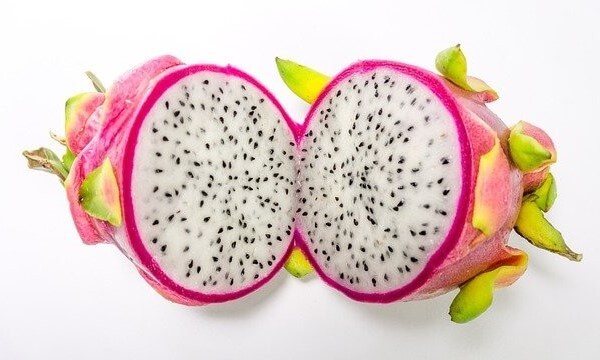
Yes, cats can have Dragon Fruit as this exotic fruit is not detrimental to your feline companion’s health.
To gain a better understanding of how this sweet fruit can affect our four-legged friends’ health, let’s first discuss what Dragon Fruit is and its nutritional profile.
What is Dragon Fruit?
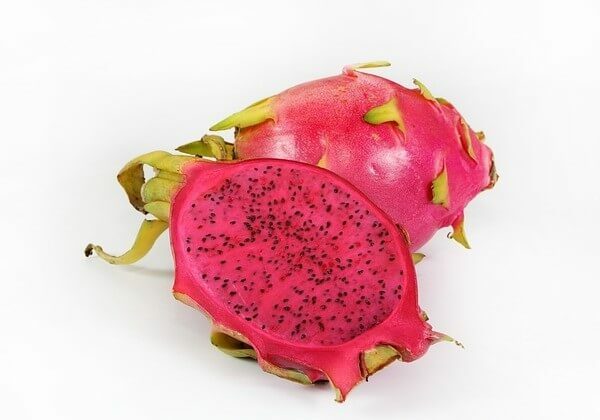
Dragon Fruit also referred to as Pitahaya, is known for its exceptionally delicious taste and aesthetically-pleasing reddish-pink or yellow skin. This fruit is native to tropical regions such as South America, Southeast Asia, Mexico, and Central America. They grow on a cactus plant known as Hylocereus.
Right away, you’ll notice that the skin of this fruit is quite interesting. It feels smooth and waxy and has triangular-shaped scales with green tips.
Dragon Fruit comes in various colors. They include:
- Red skin Dragon Fruit with inner white flesh.
- Yellow skin Dragon Fruit with inner white flesh.
- Red skin Dragon Fruit with inner red flesh.
If you’re intrigued and want to know what Dragon Fruit tastes like, you’ll want to know that the flesh is firm yet tender, dense, has watery consistency, and a little crunchy due to tiny edible seeds inside.
Essentially, the texture of the flesh is a combination of pear and sweet kiwi and it is slightly to moderately sweet, watery, earthy, and with a nutty taste due to the seeds. Un-ripe Dragon Fruit is usually tasteless.
Is Dragon Fruit safe for cats?
Yes, Dragon Fruit is generally safe and non-toxic for cats. This crunchy yet tender fruit is packed full of nutrients that are beneficial to your feline friend’s health.
However, we do want to point out that although Dragon Fruit is safe for feline consumption, it’s still not a valid reason to feed this fruit to your feline family member every day.
It can become problematic and unsafe for your feline companions if they consume too much Dragon Fruit. If you give your kittens more than two small pieces of Dragon Fruit or add too much to their regular diet, it can cause your furry friends to have an upset stomach, diarrhea or vomiting.
Is Dragon Fruit good for cats?
Yes, Dragon Fruit is good for cats when consumed in moderation. This sweet fruit contains essential vitamins, minerals, and other nutrients that can support healthy growth in cats. But remember, it should only be given as an occasional treat or once a week.
So how much Dragon Fruit can cats consume?
A medium-sized cat (weighing 10 pounds or less) can safely consume 1 to 2 pieces of Dragon Fruit per week, whereas a large cat (weighing 10 pounds or more) can safely consume 2 to 3 pieces per week.
We now know that Dragon Fruit is good for cats. But how so?
Next, we’ll discuss how eating a moderate amount of Dragon Fruit can benefit your fuzzy friend’s health.
Health benefits of Dragon Fruit for cats
Dragon Fruit isn’t just a beautiful and exotic fruit, it is highly nutritious and consuming even a small amount can provide some positive health benefits in cats.
The following are some of the health benefits our kitty cats will receive from consuming a moderate amount of Dragon Fruit.
1. Vitamin A in Dragon Fruit can improve your cat’s eye health
Extensive research studies over the years have concluded the correlation between vitamin A and eyesight. Fortunately, Dragon Fruit is full of vitamin A, which improves eye health by keeping the surface (cornea) of the eyes clean and healthy.
In addition to improving your feline friend’s eyesight, vitamin A can also help improve his nervous system, skin, fur, and muscles.
If your feline friends lack vitamin A, they may have the following symptoms:
- Experience night blindness.
- Dry skin and fur.
- Muscle weakness due to muscle deterioration.
- Lethargy.
- Loss of appetite.
- Sudden weight loss.
- Change in behaviors.
If you suspect your feline family member has vitamin A deficiency, we highly recommend that you contact your veterinarian and seek their advice and suggestion. You can also ask them if it’s alright for you to add 1 to 2 pieces of Dragon Fruit to his regular diet.
In the meantime, be sure to keep a close eye on your feline companion and look for any changes in behaviors.
We also recommend that you bring your four-legged friends to see the vet every two months for a complete health checkup. This will help identify any deficiencies before the symptoms worsen.
2. Vitamin C in Dragon Fruit helps protect against free radicals
We’ve all heard about free radicals and how bad they are. So what exactly are free radicals?
Free radicals are highly reactive and they can put your cat’s immune systems and nervous systems at risk. That’s because free radicals can destroy your feline friend’s enzymes, cell membranes, and DNA.
Over time, this can lead to cardiovascular disease, inflammatory diseases, and even premature aging in cats.
A diet rich in antioxidants can help minimize cell damage and improve a cat’s overall health.
So go ahead and feed your feline friends one to two small pieces of Dragon Fruit every week.
Dragon Fruit contains an abundance of vitamin C. The vitamin C in Dragon Fruit is an antioxidant that can help fight against free radicals. Furthermore, the risk of cancer is also reduced to an extent.
3. Antioxidants in Dragon Fruit can boost immune functions in cats
As we can see, Dragon Fruits have antioxidant properties since they are packed full of vitamins A and C. This bright reddish-pink or yellow fruit also contains other antioxidants such as beta-carotene, betalain, and lycopene.
Not only will the antioxidants in Dragon Fruit help improve your cat’s eye health and fight against harmful free radicals, but also they can also boost immune functions in cats.
When it comes to our fuzzy friends’ diet, it is essential to incorporate food that strengthens their immune system so as to protect them from life-threatening diseases and reduce the risk of chronic disease.
Better immune functions mean a healthy and active cat. Therefore, giving your kitties Dragon Fruit one to two pieces of Dragon Fruit once or twice a week (in moderation) can prove to be beneficial.
But remember, don’t overfeed your cat.
4. Fiber in Dragon Fruit can improve your cat’s gut health
There’s no doubt that Dragon Fruit is an excellent source of fiber. Adequate fiber intake can help maintain gastrointestinal motility and reduce the chances of constipation and diarrhea.
It’s important to make sure your fur babies have sufficient fiber intake since this helps promote a healthy gut microbiome, proper digestive functions, and make sure your cat’s stools are firm.
If your feline companion is having diarrhea, constipation, or digestive upset, it’s a good idea to share one to two small pieces of Dragon Fruit with him.
Furthermore, a cat throwing up because of furballs is a common occurrence. The cat owner is often fed up with cleaning the hairball-induced vomits. Giving your kitties high-fiber fruits or food can help move the hairballs in the digestive tract more smoothly. Consequently, the frequency of vomiting is reduced.
5. Calcium in Dragon Fruit helps promote healthy bones in cats
All cats need calcium in order to have strong bones and teeth. Luckily, Dragon Fruit is rich in various minerals, particularly calcium.
Calcium in Dragon Fruit can help to strengthen and protect your feline’s bones and teeth and prevent them from breaking.
Additionally, calcium can help maintain adequate heart functions in cats.
This watery and subtly sweet fruit also contains phosphorous, which is equally as essential as calcium for strong bones and teeth. Both calcium levels and phosphorus needs to be balanced.
According to National Animal Supplement Council, our feline friends should ideally get “1.2 parts calcium for every 1 part of phosphorus.”
Calcium deficiency in cats can be identified by monitoring their behavior. If your fuzzy friend shows signs of restlessness, muscle twitching, or general lethargy, bring him to the vet and get him tested to rule out the chances of calcium deficiency.
6. Carotenoids in Dragon Fruit can improve cardiovascular health in cats
As we’ve mentioned above, Dragon Fruit contains lycopene and beta-carotene, both of which are carotenoids. Carotenoids are phytonutrients that give Dragon Fruit its bright rich color.
Carotenoids are essential to your feline friend’s health because they help improve and maintain adequate heart functions, thereby helping to reduce the risk of heart disease in cats.
While the benefits may seem appealing, don’t get too carried away and start feeding your cat Dragon Fruit every day. Remember, moderation is key, and feeding your kitties just one or two small pieces of Dragon Fruits will do the trick.
7. Iron in Dragon Fruit can improve iron levels in cats
Low iron levels in a cat’s body can result in anemia. Iron is essential for carrying oxygen in the blood and transporting it to different organs in the body. If your feline companion has pale gums or is acting lethargic, he may be low in iron and may be anemic.
We highly recommend that you speak with your vet to seek their health advice and suggestion. You can ask the vet if it is alright to feed your kitties one to two small pieces of Dragon Fruit since it is a rich source of iron.
If your vet agrees that it is fine to give your cat Dragon Fruit, go ahead and feed him a moderate amount. This may help increase his iron levels in the body and combat anemia or iron deficiency. However, it must be given in a restricted manner.
Is Dragon Fruit bad for cats?
No, Dragon Fruit is not bad for cats. However, Dragon Fruits can be bad for cats when consumed in excess amounts and if your feline friends accidentally ate the skin.
Too much of anything good can also have detrimental health effects.
Also, make sure if you’re giving your kitties some Dragon Fruit, that they don’t eat the skin of this fruit.
Since the skin of the Dragon Fruit is waxy, rubbery, and hard, it can be a choking hazard for cats.
Since our cats are obligate carnivores, they don’t require fruits in their diet. Therefore, consuming too many fruits (such as Dragon Fruit) can be a bit overwhelming and stressful to their digestive system.
This can lead to diarrhea, vomiting, and gastrointestinal upset.
When feeding your cats Dragon Fruit, make sure you’re nearby to keep a close eye on them so they don’t eat the skin of this fruit and to ensure they’re eating the recommended amount.
Health risk of Dragon Fruit on cats
Diarrhea
Dragon Fruit also contains insoluble fiber, which is known as cellulose. Generally, animals with a plant-based diet have cellulose-digesting bacteria in their gut which helps them digest the insoluble fiber.
However, carnivorous animals, like our feline friends, lack those bacteria. When our cat’s digestive system isn’t able to properly digest the insoluble fiber in Dragon Fruit, it can lead to upset stomach and diarrhea.
If your kittens are experiencing these symptoms, make sure to contact your vet as soon as possible, and in the meantime, provide them with plenty of fresh cool water.
Frequent diarrhea can lead to dehydration and other health issues.
Renal Failure
If your feline companion consumes too much Dragon Fruit, they may get feline hypercalcemia.
This is when there is an unusually high level of calcium in the blood. Excessive calcium intake can result in kidney failure. And here’s why.
When the calcium levels exceed the normal limit, the parathyroid gland in the neck sends signals to release the excess calcium from the bones and into the blood.
The kidney will also try to excrete the extra calcium through the urine, but if it’s too much, some of it will be left behind since the kidneys won’t be able to get rid of it all.
As a result, the remaining calcium starts to deposit itself in the soft tissues of the kidney, and this not only causes inflammation and pain, but it can damage the kidney and lead to renal failure.
Also, since the bones release the excess calcium, they may start to become weak and brittle.
Feline obesity and dental problems
Although cats can’t taste sugar or sweets, they are happy to eat any food or fruit you give them. This includes Dragon Fruit.
In one just Dragon Fruit, there are 7.65 grams of sugar. That is a lot of sugar for cats who don’t need sugar in their diet.
Additionally, the high sugar content in Dragon Fruit may cause cavities and gum diseases. Likewise, unrestricted intake of this sweet fruit can lead to feline obesity if consumed regularly.
Choking risk
Cats love to sneak around and do whatever they want. Many cat owners habitually leave fruits on the kitchen counter so they’re easily accessible.
However, many forget they have a cat who loves to indulge in a secret affair with the Dragon Fruit.
If you have a habit of leaving fruits on the kitchen counter and have an adventurous cat that loves to eat anything they can get their paws on, make sure not to leave Dragon Fruits out anymore.
That’s because your feline companion may be intrigued by the bright reddish-pink or yellow color of the Dragon Fruit and may sneak a bite or two.
Since the skin of the Dragon Fruit is hard, firm, and waxy, your kittens may accidentally choke when trying to swallow it. If you’re away at work or in another room in the house and are not aware that your kitties just sneaked in a bite and are now choking, this can become fatal and lethal.
Even if your kitties do manage to swallow the tough skin, their digestive system may have a hard time breaking it down. Sometimes, this tough skin can cause intestinal or bowel blockage. In severe cases, surgery may be required to remove the Dragon Fruit skin that’s causing intestinal blockage.
Is Dragon Fruit toxic to cats?
American Society for the Prevention of Cruelty to Animals (ASPCA) has categorized Dragon Fruit as a non-toxic fruit for cats. It is completely safe to feed your feline friends one to two small pieces of Dragon Fruit once a week.
If you’re still concerned or worried, we highly recommend that you ask your veterinary doctor about the proper amount that is safe for your cat depending on his weight.
Do cats like Dragon Fruit?
Yes, some cats do enjoy eating Dragon Fruit. However, we know that they enjoy Dragon Fruit not because of its mildly sweet taste (since cats cannot taste sugar or sweetness at all) but probably due to its fresh, watery, crunchy, and soft texture.
Since the flesh of a Dragon Fruit do contain tons of tiny black seeds, your kitties may become intrigued and curious and start eating the flesh of the Dragon Fruit to satisfy their curiosity and to figure out what these black seeds are.
You may probably guess that cats like Dragon Fruit because of its vibrant colors like reddish-pink and yellow, but this is not the case.
That’s because cats don’t really see colors like red, brown, or orange. They may be able to see yellow and blue wavelengths of light, so they may be attracted to yellow Dragon Fruit.
Signs my cat likes Dragon Fruit
You may wonder, “how do I know if my cat likes Dragon Fruit or not?”
Well, your kitten’s behavior while munching this vibrant exotic fruit can tell you a lot about whether he is enjoying this fruit or not.
- Some cats will meow a lot when they like or want something, so if you notice your feline friends walking around in circles and purring or meowing while the Dragon Fruit is being cut up, then it’s the first sign that he likes Dragon Fruit.
- Cats tend to have an upright tail when they like something or are content. Observe your fuzzy companion when he’s eating the Dragon Fruit. If he is holding his tail high in the air, then he likes the fruit.
- Our feline friends are eager animals when they are interested in something. If your kitty jumps onto the kitchen counter while you’re cutting up the Dragon Fruit, then it means that she is interested in the fruit and wants to have some.
- Cats are obvious in their behaviors. If your cat starts pawing you while you’re cutting up the Dragon Fruit, chances are your kitty cat want to have some.
Can kittens eat Dragon Fruit?
In general, kittens have different nutritional requirements than that of adult cats. A kitten’s digestive system isn’t fully developed yet so it may not be tolerant of certain food or fruits.
Additionally, they are obligate carnivores so their digestive systems are designed to break down meat and not fruits or vegetables.
If you have kittens, it’s best to avoid feeding them Dragon Fruit to avoid vomiting, diarrhea, upset stomach and gastrointestinal upset.
How to properly feed Dragon Fruits to your cats
When it comes to feeding Dragon Fruits to our feline companions, make sure to peel the vibrant skin off first. That’s because the Dragon Fruit’s skin of is not edible and our fuzzy friends should avoid it at all costs since it can be a choking hazard..
Here’s how to properly feed Dragon fruit to your cats:
- Ensure the fruit is fresh and carefully peel off the skin.
- Cut the flesh of the Dragon Fruit into tiny, bite-sized pieces so your kitties can ingest them without the risk of choking.
- You can give one or two bite-sized pieces to your feline friends or place them in your feline friend’s food bowl.
- Give your kittens the space and time they need to get familiar with the fruit. Some cats like to take the time to look over their food before eating it. Avoid forcing your feline friends to eat it since some cats may not like Dragon Fruits.
- Once your feline friends starts eating the fruit, be observant and make sure they’re eating it safely.
- Observe your cat’s behavior for the next 12 to 24 hours to ensure they do not have any adverse reactions from eating Dragon Fruit.
Be mindful if your kittens have never had Dragon Fruits before.
If this is their first time eating Dragon Fruit, how you introduce this fruit to them is very important. Be sure to take it slow and only offer them a small piece. After they’ve consumed the small piece of Dragon Fruit, observe their behavior and make sure they’re not experiencing any adverse effect.
If your kittens starts vomiting or feeling unwell, do not feed them anymore Dragon Fruit and consult with your vet at your earliest convenience. Let the vet know how much Dragon Fruit your cat ate, the time and date, and any other information the vet requires.
If your kitties are fine after consuming the Dragon Fruit, you can slowly and gradually increase the amount of Dragon Fruit you’re feeding them.
Cats and Dragon Fruit
Can cats eat yellow Dragon Fruit?
Yes, cats can eat yellow Dragon Fruit. The nutritional value of a yellow Dragon Fruit is identical to a pink or red Dragon Fruit.
However, yellow Dragon Fruits do taste a bit differently from reddish-pink Dragon Fruit. The yellow Dragon Fruit with white flesh is the sweetest of all types, whereas the pink Dragon Fruit with white flesh has an earthy flavor.
Is Dragon Fruit cactus toxic to cats?
No, the Dragon Fruit cactus is not toxic to cats. However, it’s best not to feed your cats Dragon Fruit cactus or allow your feline companions to be near one since this plant do have sharp spikes which can hurt your fur babies.
Is Dragon Fruit plant toxic to cats?
No, the Dragon Fruit plant is not toxic to cats. However, that doesn’t mean that your feline companions should be near them and eating it. Our fuzzy friends should only be allowed to eat the fruit and not the plant. It’s best to only feed your feline friends the flesh of the Dragon Fruit.
So, can cats eat Dragon Fruit?
Dragon Fruit is an exceptionally tasty fruit. Its mildly sweet taste and crunchy soft texture compel our feline companions to eat it.
Many cat owners repeatedly feed their fur babies Dragon Fruit because they look extremely cute while eating it. However, they may not realize how harmful this can be, especially when cats consume too much Dragon Fruits.
Keep in mind that Dragon Fruit is safe for feline consumption if fed in moderation and under your supervision. As a responsible cat owner, it’s our responsibility to keep your four-legged friends safe and healthy. So make sure not to leave the Dragon Fruit out on the the kitchen counter unattended. If you know your fuzzy companion enjoys eating, keep the Dragon Fruit inside the refrigerator or on the top shelf of a closed cabinet.
Related Questions
Cherries are toxic to cats because the cherry pit contains cyanide, which can lead to cyanide poisoning. Additionally, raisins and grapes can lead to kidney damage or kidney failure. Furthermore, all fruits belonging to the citrus family can upset your cat’s stomach. Do not feed these fruits to your cats.
DISCLAIMER: THIS WEBSITE DOES NOT PROVIDE MEDICAL ADVICE
The information, including but not limited to, text, graphics, images and other material contained on this website are for informational purposes only. No material on this site is intended to be a substitute for professional veterinary advice, diagnosis, or treatment. Always seek the advice of your veterinarian or other qualified health care provider with any questions you may have regarding dietary needs.
Resources:
https://simple.wikipedia.org/wiki/Dragonfruit
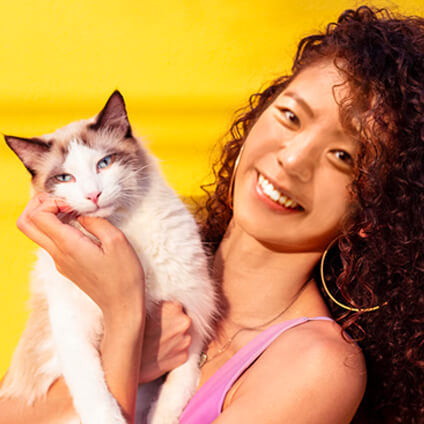
With over five years of specialized experience as an animal writer, my expertise lies in cat nutrition, health, behavior, grooming, and training. I am dedicated to delivering helpful and informative content that caters to the well-being of our feline friends. My primary goal is to empower pet owners with knowledge and ensure our feline companions thrive in health and happiness. In my free time, I love volunteering at local cat rescue centers.
